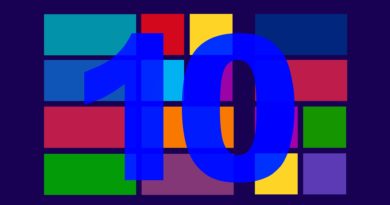Top Flutter Alternatives for Cross-Platform Development
What Is Cross-Platform Development?
Cross-platform or platform-agnostic development allows developers to create software applications for multiple operating systems with minimal changes. This saves time and resources.
At one point in time, building a backend that works across multiple platforms was once a big challenge, but cross-platform development has come to the rescue. Some of the finest tech stacks, including React Native and Flutter, have sprung up thanks to this approach.
A cross-platform app allows developers to share some or even all of the source code across multiple platforms, including Android and iOS. This means that mobile assets only need to be coded once and will work seamlessly on all platforms without recoding for each platform.
Frameworks like Flutter and React Native enable software applications to run on multiple platforms, saving developers time and resources. Among them, Flutter is now a crowd favorite.
Why is Flutter Gaining Ground
Unlike any programming language, Flutter is an SDK similar to an Android SDK (for only Android development). Consider Flutter, a reactive programming framework that uses a single codebase to generate spectacular iOS and Android applications.
The following image explains the advantages of employing Flutter.
| Advantage | Description |
| Beautiful | Flutter has built-in Material Design and Cupertino (iOS-flavor) widgets, rich motion APIs, smooth, natural scrolling, and platform awareness. |
| Productive | Flutter is cross-platform, so you can use the same code base for your iOS and Android app, saving you time and resources. |
| Fast | Dart compiles into native code, and Flutter has its widgets, eliminating the need to access OEM widgets. Reactive views are also provided without requiring a JavaScript bridge, leading to faster app startup times and fewer performance issues. |
| Open | Both Flutter and Dart are open-source and free to use. Extensive documentation and community support are available to help with any issues. |
Disadvantages of Flutter
Flutter’s biggest limitation is its limited access to native APIs and platform-specific features. While Flutter provides a rich set of widgets and packages, accessing certain device functionalities may require writing platform-specific code, which can be time-consuming and complicate the development process of the application.
Another limitation is the larger app size of Flutter compared to native apps. Flutter apps include a runtime and framework, which adds to the overall app size. This can be a concern, especially for apps with limited storage or regions with slower internet connections.
Flutter’s performance may be affected when dealing with complex UI animations or heavy computations. While Flutter is known for its high-performance UI rendering, certain scenarios may require additional optimizations to maintain smooth animations and responsiveness, especially on lower-end devices.
Why Look for Alternatives
Flutter employs a novel programming language called Dart, which differs from most native programming languages for building applications.
Native frameworks like iOS’s Swift and Android’s Java/Kotlin are supposedly better in terms of performance, despite Flutter’s growing popularity.
Flutter has limitations regarding specific platform features or integrations compared to the native frameworks. Developers should explore alternative frameworks that provide better integration with that specific platform.
React Native

- Introduction: React Native is a popular framework that allows developers to build native mobile apps using JavaScript and the React library.
- Achievements: React Native has gained significant adoption and has been used to develop high-profile apps like Facebook, Instagram, and Airbnb.
- USP: The main selling point of React Native is its ability to write code once and deploy it on both iOS and Android platforms, resulting in time and cost savings.
- Advantages over Flutter: React Native has a larger and more mature ecosystem with a vast selection of community-contributed libraries and resources. It also enjoys a larger developer community, leading to more support and learning opportunities.
Xamarin
- Introduction: Xamarin is a cross-platform framework that allows developers to build native apps using C# and .NET, providing a shared codebase across multiple platforms.
- Achievements: Xamarin has been widely adopted and used to develop apps by companies such as Slack, GitHub, and UPS.
- USP: Xamarin’s main strength lies in its ability to leverage existing .NET libraries, making it ideal for developers with a background in C# development.
- Advantages over Flutter: Xamarin offers seamless integration with platform-specific APIs and allows access to native features, giving developers more flexibility and control over the app’s behavior and performance.
Kotlin Multiplatform
- Introduction: Kotlin Multiplatform is a cross-platform framework that enables code sharing between different platforms using Kotlin as the programming language.
- Achievements: Kotlin Multiplatform has gained traction, particularly in the Android development community, and is actively supported by JetBrains.
- USP: The key feature of Kotlin Multiplatform is the ability to share business logic and core code across platforms while still allowing platform-specific implementations for UI and other platform-specific features.
- Advantages over Flutter: Kotlin Multiplatform leverages Kotlin’s interoperability with existing Java libraries and frameworks, making it easier to integrate with existing codebases and utilize platform-specific features and APIs.
NativeScript:
- Introduction: NativeScript is an open-source framework that allows developers to build native mobile apps using JavaScript, TypeScript, or Angular.
- Achievements: NativeScript has been developed by companies such as Philips, Progress, and the NBA to develop apps.
- USP: NativeScript provides a native UI experience by rendering components using native APIs, resulting in high-performance apps with access to all platform features.
- Advantages over Flutter: NativeScript offers direct access to native APIs and UI components, allowing developers to create highly customizable and platform-specific user interfaces. It also supports popular JavaScript frameworks like Angular, making it an attractive option for developers familiar with those ecosystems.
Other Notable Cross-Platform Frameworks
- Ionic: An open-source framework built on top of Angular and Apache Cordova, allowing developers to create cross-platform mobile apps using web technologies like HTML, CSS, and JavaScript. Ionic offers a wide range of pre-built UI components and integrates well with Angular.
- PhoneGap/Cordova: PhoneGap (formerly known as Apache Cordova) is an open-source framework that enables building mobile apps using HTML, CSS, and JavaScript. It provides access to device features through JavaScript APIs and allows for easy deployment across multiple platforms.
Finding the Right Alternative for Your Project
When it comes to cross-platform application development, choosing the right alternative for your project is crucial for a successful outcome. The options may seem overwhelming, but one company truly stands out as the go-to choice: GeekyAnts.
GeekyAnts has extensive expertise and a deep understanding of Flutter’s capabilities, enabling the building of high-performance, visually stunning, and feature-rich mobile apps. With a skilled team of developers, including core contributors, GeekyAnts leverages Flutter’s power to create seamless user experiences across iOS and Android platforms. Visit GeekyAnts



